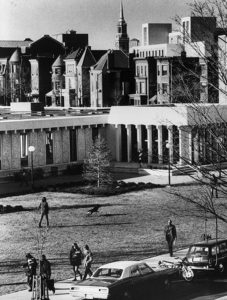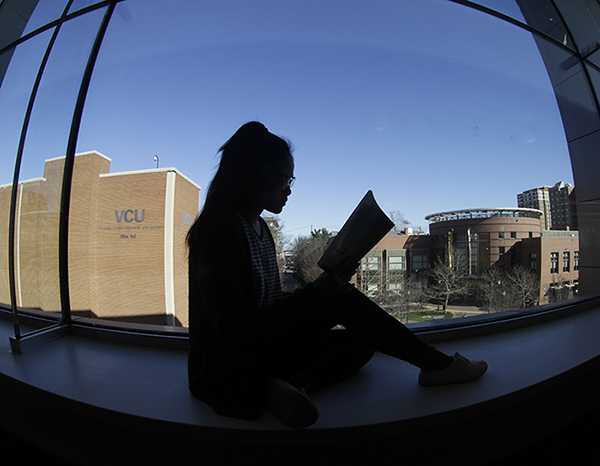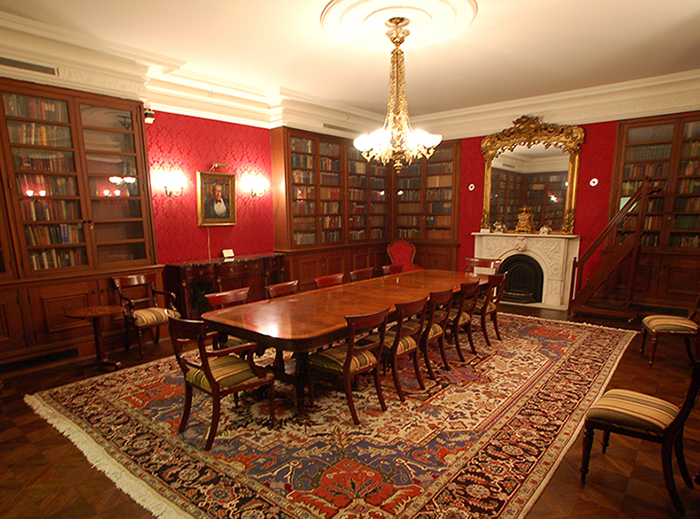
Special Collections and Archives
VCU Libraries
In 1968 ground was broken and construction on James Branch Cabell Library began. The first phase, consisting of a basement and ground floor was completed and opened in the fall of 1970. At that time VCU student enrollment was 13,000 and the library held 138,945 volumes.
After four more years of construction, the top three floors were finally finished. On June 10, 1976 the library was formally dedicated. Later that year, on December 5th, the Cabell Room was dedicated.
By 1993 the library collection had grown to 1 million volumes and technology was changing the tools of research. In 2009 a collector’s edition of The Amazing Spider-Man featuring President Barak Obama on the cover became the 2 millionth item added to library collections. Computers and databases were important to the way students and faculty carried out their work.
Virginia Commonwealth University continued to grow, and by 2013 enrollment reached 32,000 students. Once again library expansion was essential to meeting students’ needs. VCU Libraries, under the leadership of University Librarian and Dean of Libraries John E. Ulmschneider undertook a major building project that included 63,000 square feet of improvements to the existing building and the addition of 93,000 square feet of new construction.
On March 15, 2016, VCU Libraries celebrated the grand opening of the new James Branch Cabell Library. Two years later, the library passed the 3 millionth volume milestone, became a member of the Association of Research Libraries, and was recognized with the 2018 Association of College and Research Libraries Excellence in Academic Libraries Award.

Photograph by Jay Paul

VCU Libraries
To see more photographs from the history of James Branch Cabell Library at Virginia Commonwealth University’s Monroe Park campus, visit VCU Libraries Gallery and VCU Libraries Flickr.

VCU Libraries
The Cabell Room, located on the fourth floor of Cabell Library, houses the personal library of James Branch Cabell, catalogued by Maurice Duke, Ph. D. The room also contains artifacts and some furniture previously owned by the family and moved from their home on Monument Avenue. Visitors to the Cabell Room will see Cabell’s writing desk and typewriter, along with portraits of the author.

Photograph by Jay Paul